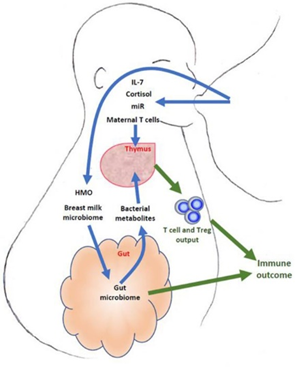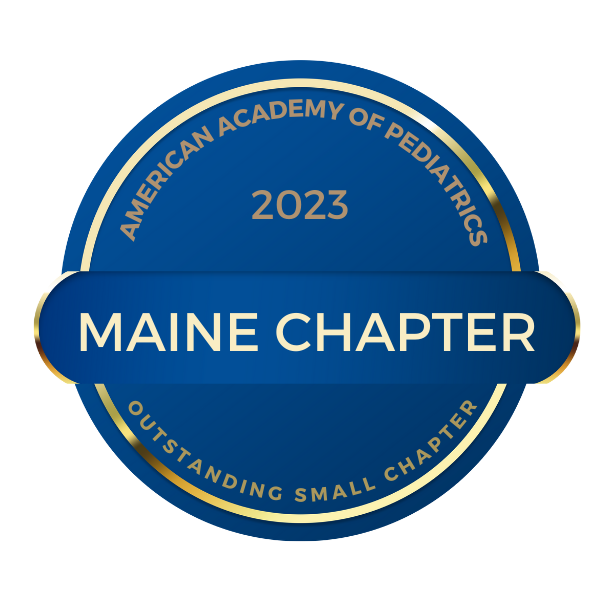Breastfeeding
An Overview of the Benefits to Breastfeeding
Breastfeeding: Healthychildren.org
- A collection of informational articles to assist mothers in answering any questions they may have regarding breastfeeding.
RESOURCES
Mothers’ Milk Bank Northeast accepts donations of human milk to ensure that medically fragile babies receive it. They also offer safe, pasteurized donor milk to families throughout the Northeast who need to supplement breastfeeding in the first few weeks post-partum when available. Learn more by visiting the website at www.milkbankne.org or by contacting Kylia Garver, Director of Hospital Relations and Community Education, at kylia@milkbankne.org or 617-340-3497.
Should I Breastfeed or Bottle feed?
Breastfeeding Benefits Your Baby's Immune System
National Association of County & City Health Officials Continuity of Care in Breastfeeding Support
The American Academy of Pediatrics (AAP) released the "Breastfeeding & Lactation Support Policies for Medical Trainees" webpage, featuring resources for institutions creating or revising their breastfeeding and lactation policies that support their medical trainees. The webpage includes draft surveys to measure knowledge of an existing breastfeeding policy, guidelines for what should be in a policy, sample presentations, and policy dissemination ideas. The step-by-step guide was created by a group of institutions that participated in a learning collaborative funded by the Centers for Disease Control and Prevention.
The AAP policy, Breastfeeding and the Use of Human Milk is one of the most accessed policies available from the AAP because of its importance for the health of families here in the US and throughout the world. This statement details the benefits of breastfeeding, its true contraindications and those that are not, the challenge of breastfeeding in the US, recommendations for breastfeeding for healthy as well as high risk infants, and the role pediatricians play in protecting, promoting, and supporting breastfeeding.
Related AAP Policies
- An Evidence-Based Review of Important Issues Concerning Neonatal Hyperbilirubinemia, AAP Technical Report, 2004
A technical report about the evidence related to the management of hyperbilirubinemia. - The Transfer of Drugs and Therapeutics Into Human Breast Milk: An Update on Selected Topics, AAP Clinical Report, 2013
This clinical report discusses several topics of interest surrounding lactation, such as the use of psychotropic therapies, drugs to treat substance abuse, narcotics, galactagogues, and herbal products. - Management of Hyperbilirubinemia in the Newborn Infant 35 or More Weeks of Gestation, 2004
A clinical guideline on the management of hyperbilirubinemia in the term infant. - Prevention of Rickets and Vitamin D Deficiency in Infants, Children, and Adolescents, 2008
A clinical report regarding the need for vitamin D supplementation for infants and children.
Policies from Other Organizations
- ACOG Clinical Guidelines on BreastfeedingA number of committee opinion reports and resources authored or developed by the American College of Obstetricians and Gynecologists.
- Breastfeeding Policy Statement, American Academy of Family Physicians
A short statement identifying the American Academy of Family Physicians' stance on breastfeeding. - 10 Ways To Stop Caregivers From Overfeeding Your Breastfed Baby
- The Surgeon General's Call to Action to Support Breastfeeding
This Call to Action describes specific steps people can take to participate in a society-wide approach to support mothers and babies who are breastfeeding. - The Ten Steps to Successful Breastfeeding, Baby-Friendly USA
Baby-Friendly® hospitals and birthing facilities must adhere to the Ten Steps to receive, and retain, a Baby-Friendly designation.
Opportunity for Parents of Newborns (<16 weeks) who have had a NICU stay or experienced problems before, during or after the birth? Read more...
Maine State Breastfeeding Coalition
- Maine State Breastfeeding Coalition & Let’s Go!, a program at MaineHealth Community Health, developed resources for workplaces to best support lactating employees.
- MSBC created 4 videos to highlight the importance of supporting lactating employees and showcase successful adoption of lactation-friendly environments in various Maine workplaces.
Breast Feeding Resources
The AAP policy, Breastfeeding and the Use of Human Milk is one of the most accessed policies available from the AAP because of its importance for the health of families here in the US and throughout the world. This statement details the benefits of breastfeeding, its true contraindications and those that are not, the challenge of breastfeeding in the US, recommendations for breastfeeding for healthy as well as high risk infants, and the role pediatricians play in protecting, promoting, and supporting breastfeeding.
Related AAP Policies
- An Evidence-Based Review of Important Issues Concerning Neonatal Hyperbilirubinemia, AAP Technical Report, 2004
A technical report about the evidence related to the management of hyperbilirubinemia. - The Transfer of Drugs and Therapeutics Into Human Breast Milk: An Update on Selected Topics, AAP Clinical Report, 2013
This clinical report discusses several topics of interest surrounding lactation, such as the use of psychotropic therapies, drugs to treat substance abuse, narcotics, galactagogues, and herbal products. - Management of Hyperbilirubinemia in the Newborn Infant 35 or More Weeks of Gestation, 2004
A clinical guideline on the management of hyperbilirubinemia in the term infant. - Prevention of Rickets and Vitamin D Deficiency in Infants, Children, and Adolescents, 2008
A clinical report regarding the need for vitamin D supplementation for infants and children.
Policies from Other Organizations
- Breastfeeding and Lactation for Medical Trainees, American Academy of Family Physicians
A policy supporting breastfeeding and lactation accommodations for medical trainees, which can serve as a model policy for other medical organizations and/or medical institutions. - ACOG Clinical Guidelines on BreastfeedingA number of committee opinion reports and resources authored or developed by the American College of Obstetricians and Gynecologists.
- Breastfeeding Policy Statement, American Academy of Family Physicians
A short statement identifying the American Academy of Family Physicians' stance on breastfeeding. - Breastfeeding Position Paper, American Academy of Family Physicians
A paper explaining the American Academy of Family Physicians' stance on breastfeeding. - The Surgeon General's Call to Action to Support Breastfeeding
This Call to Action describes specific steps people can take to participate in a society-wide approach to support mothers and babies who are breastfeeding. - The Ten Steps to Successful Breastfeeding, Baby-Friendly USA
Baby-Friendly® hospitals and birthing facilities must adhere to the Ten Steps to receive, and retain, a Baby-Friendly designation.

Cold and flu season are well upon us. Many mothers wonder if it is still safe for them to breastfeed if they are sick. Please assure them it is! In fact, breast milk contains multiple bioactive components that support the infant immune system:
· Immunoglobulins/antibiodies
o Breast milk is full of antibodies that are directed against the microbes the mother has been exposed to and protect the infant against a wide range of microorganisms.
o These include immunoglobulins A, G, M, D, and E, with SIgA being the most abundant. IgA promotes infant immune tolerance by coating the mucosal surfaces in the infant’s gut and reinforces its epithelial barrier to block pathogens, prevent inflammation, and stimulate the infant’s production of SIgA.
· Lysozymes
o Active against inflammation, and highest in the milk after 6 months. Lysozymes are not destroyed by heat treatment.
· Lactoferrin
o An antimicrobial, modulator of immune function. Lactoferrin may modify immune function through a lactoferring receptor in the intestine. It is able to suppress E.coli in the intestine.
· Maternal leukocytes
o “Hematopoietic-derived cells from breast milk survive the infant gastrointestinal tract… likely due to the weak digestive enzyme activities and low acidity of the infant stomach… This allows for the survival of maternal milk leukocytes.” FMI: Transfer of maternal immune cells by breastfeeding: maternal cytotoxic T lymphocytes
· Infant microbiome components:
o Human milk oligosaccharides (HMO): these protect against mucosal infections by regulating the gut epithelium, immune cells and microorganism.
o “Breast milk develops a supportive and protective microbiota. Glycosylated proteins such as lactoferrin, lysozyme, and immunoglobulins are important nonnutritive factors that protect infants from infection and, as a result, affect the development of the intestinal microbiome. These bioactive proteins are the first line of defense against potential pathogens within the infant gut and exert their protective effects via multiple and often overlapping mechanisms. These may have either direct or indirect effects on the intestinal microbiome by interacting with bacteria, engaging in pathogen destruction/deflection including immune exclusion, interacting with the infant mucosal immune system, and stimulating epithelial barrier function.” FMI: https://www.ncbi.nlm.nih.gov/pmc/articles/PMC4686345/pdf/nmi-suppl.1-2015-001.pdf
· Immune cells: Macrophages, granulocytes (neutrophils, etc.), leukocytes, lymphocytes: specifically, T-cells
o Thymic development
§ Previous research shows that the thymic index of breastfed infants is larger than formula fed infants, and that breastfeeding may influence the T cell compartment in infants.
§ “Breast milk may potentially modulate infant thymic development by influencing infant microbiome composition and bacterial metabolite production.”
§ “Cytokines, hormones, micro-RNAs, oligosaccharides, as well as active maternal immune cells and mammary microbiome may modulate the infant immune development through mechanisms both dependent and independent of the thymus.”
o Copyright © 2018 Hsu and Nanan
· And have you heard about HAMLET- human alpha-lactalbumin made lethal to tumor cells? HAMLET is a protein-lipid complex that induces apoptosis-like death in tumor cells, but leaves fully differentiated cells unaffected. HAMLET inactivates 40 forms of tumors. “This mechanism may contribute to the protective effect of breastfeeding against childhood tumors.”
There are rare contraindications to providing breast milk to infants. Read more here.
References :
Cabinian A, Sinsimer D, Tang M, Zumba O, Mehta H, Toma A, et al. (2016) Transfer of Maternal Immune Cells by Breastfeeding: Maternal Cytotoxic T Lymphocytes Present in Breast Milk Localize in the Peyer’s Patches of the Nursed Infant. PLoS ONE 11 (6): e0156762. doi:10.1371/journal.pone.0156762
Campbell SH, Lauwers J, Mannel R, Spencer B. Core curriculum for interdisciplinary lactation care. Burlington, MA: Jones & Bartlett Learning; 2019.
O’Sullivan et al. The Influence of Early Infant-Feeding Practices on the Intestinal Microbiome and Body Composition in Infants. Nutrition and Metabolic Insights 2015:8(S1) 1–9 doi:10.4137/NMI.S29530.

